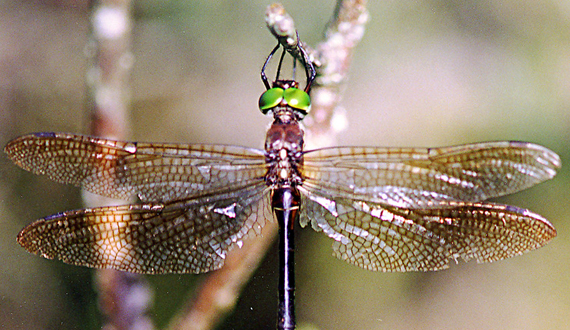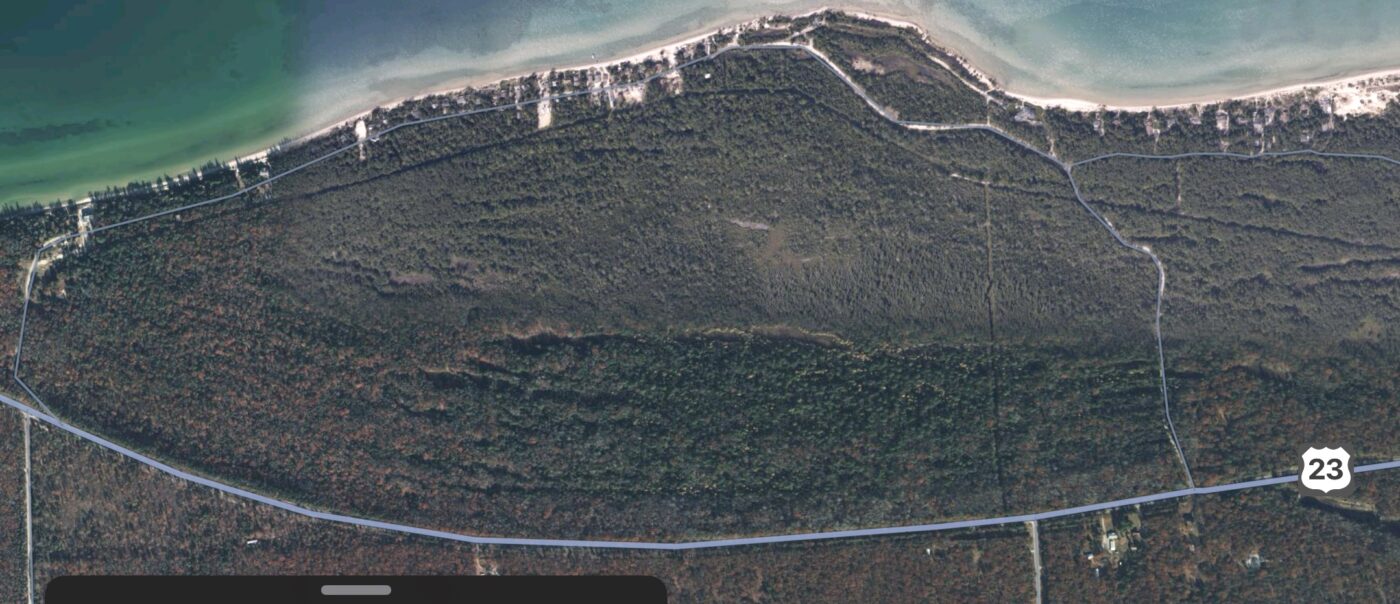“Without special conservation efforts, Michigan’s rare wetland ecosystems could be lost forever to development.”
-Dianne Farner, Deputy Director, Headwaters Land Conservancy
Ocqueoc, MI (December 2024)—It’s an uncommon experience to catch a glimpse of the endangered Emerald dragonfly — when you do, its vivid emerald eyes and intricate wings make for an unforgettable encounter with nature. Along the rare dune and swale ecosystems on the shores of Lake Huron, moments with species like these are still possible. And worth preserving.
Headwaters Land Conservancy is on a mission to protect northern Michigan’s most vulnerable landscapes and the remarkable species that inhabit them. Without conservation, these sensitive ecosystems face the threat of development, which could alter the land and put its fragile biodiversity at risk.

Thanks to support from the Walters Family Foundation, Headwaters Land Conservancy has recently acquired two critical parcels of wetland near the Hess Nature Preserve in Ocqueoc, Presque Isle County – a shoreline wetland area the organization currently manages. These new acquisitions are vital to safeguarding the dune and swale ecosystem, a habitat that hosts numerous threatened and endangered species, including the Emerald dragonfly. “We can’t risk someone buying this land and building pole barns or a big house right on the lake,” explains Farner. “There’s too much to lose.”
Protecting these lands is just the beginning. The next step is ecological restoration: returning the ecosystem to its natural state. This includes eliminating invasive species like spotted knapweed and planting native vegetation. “Each year at the preserve, we take small but meaningful steps, like removing invasive plants from the beach, that lead to significant improvements,” Farner notes. The team is also focused on creating habitat corridors to connect fragmented landscapes. These corridors will allow wildlife to move freely and enable native plants and animals to flourish without the threat of development. “When land is fragmented, it creates isolated ‘islands,’” Farner explains. “If wildlife is trapped on these islands, they risk losing their ability to survive.”

Public access and education are also key parts of the vision. These new parcels will be integrated into the larger preserve, becoming part of a public nature area. “The Walters Family Foundation has been essential in helping us preserve land that matters – not just to the environment, but to people as well,” Farner says. Plans include inviting trails and educational programs to help residents and visitors connect with this unique slice of Michigan’s coast.
Looking ahead, the team envisions thriving wetlands teeming with native flora and fauna. It’s a vision of an unspoiled, vibrant ecosystem that inspires both admiration and respect. “This part of the coast is still really wild, which makes it special,” Farner highlights. She describes the pitcher plants, the moss-draped cedar trees, the radiant yellow lady’s slippers; natural gems that make this stretch of coastline one of Michigan’s best-kept secrets. Meanwhile, the elusive Emerald dragonfly hides among the leaves, waiting to be discovered.

